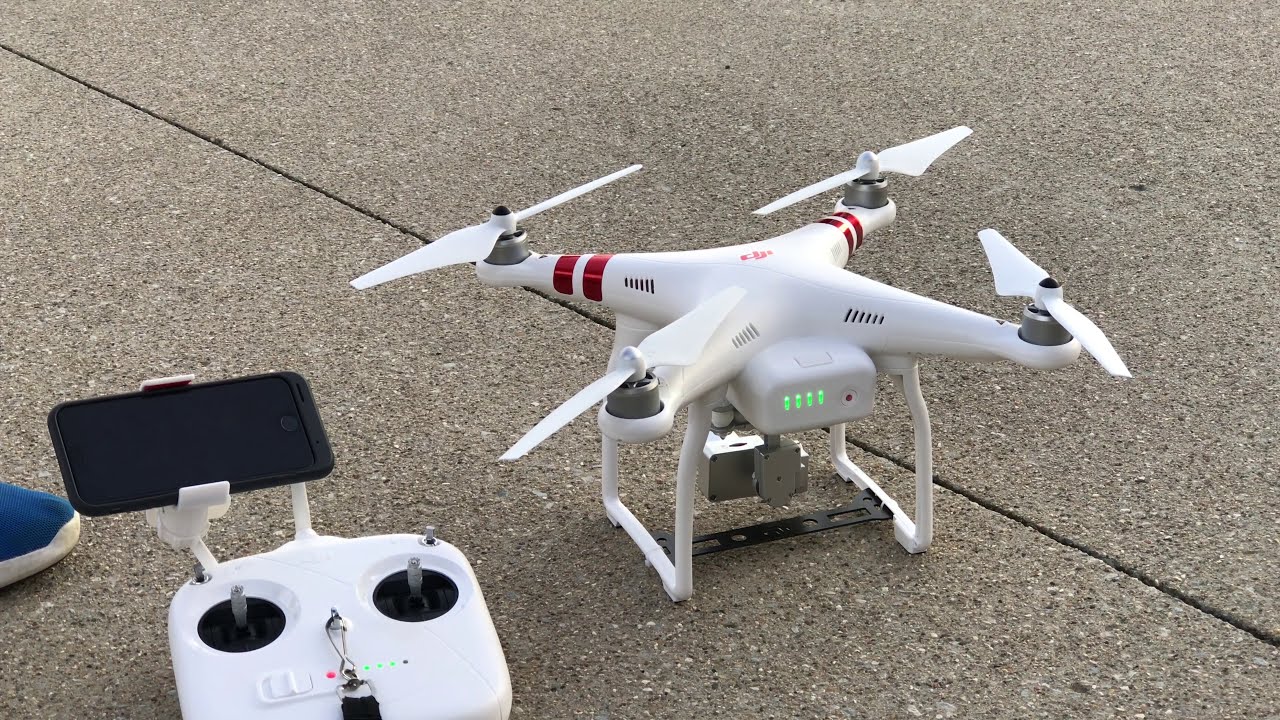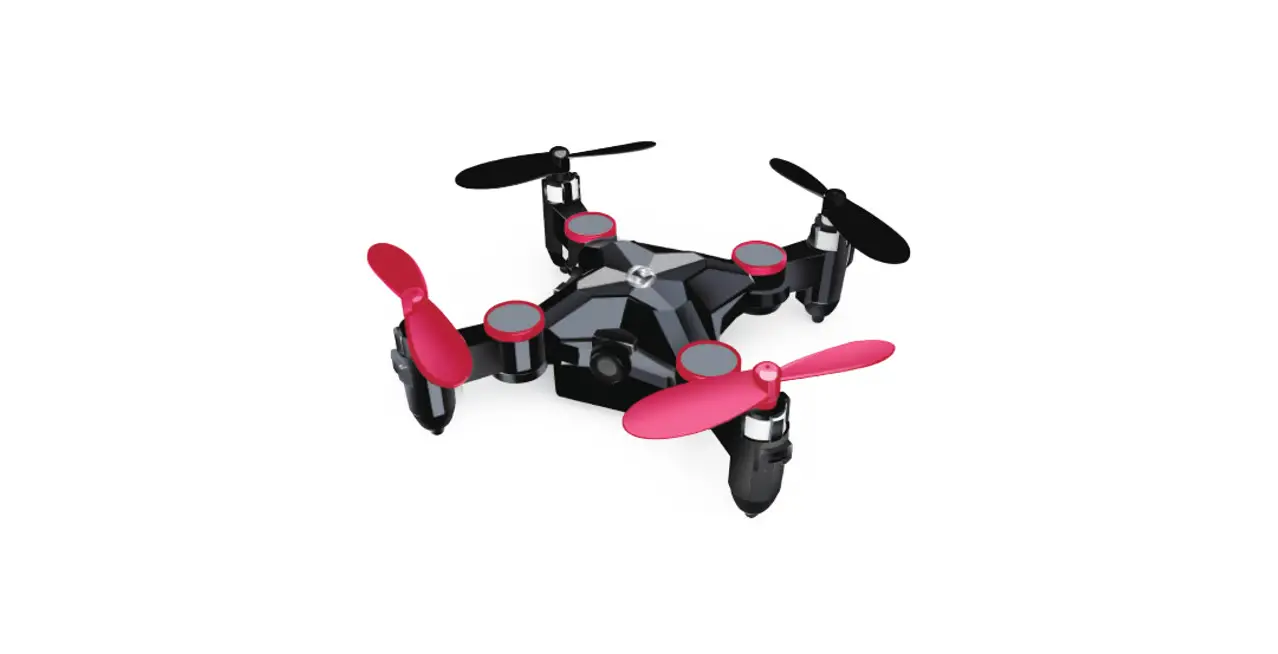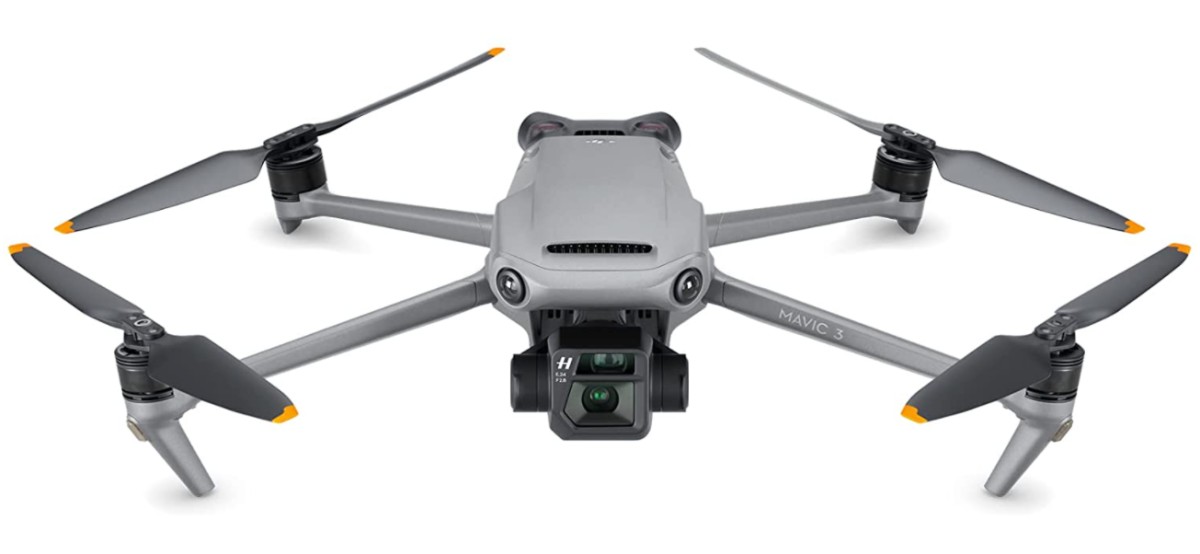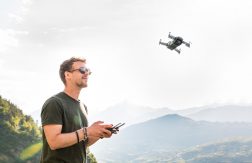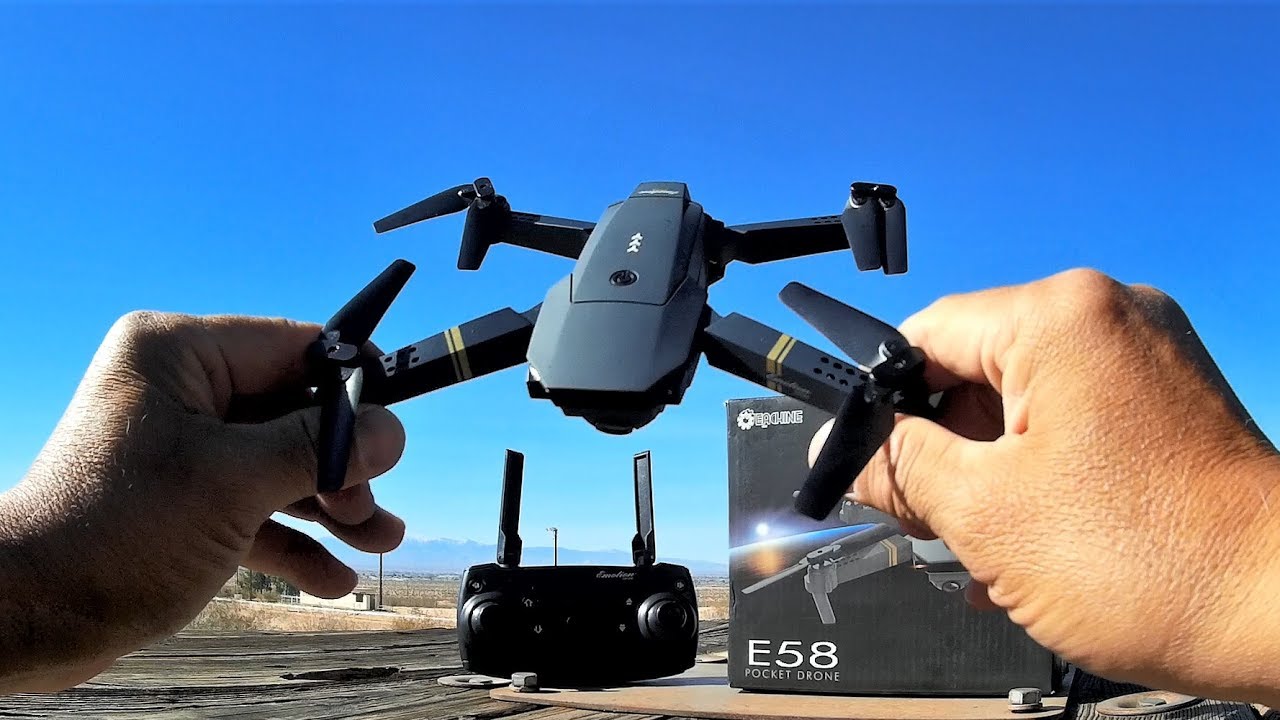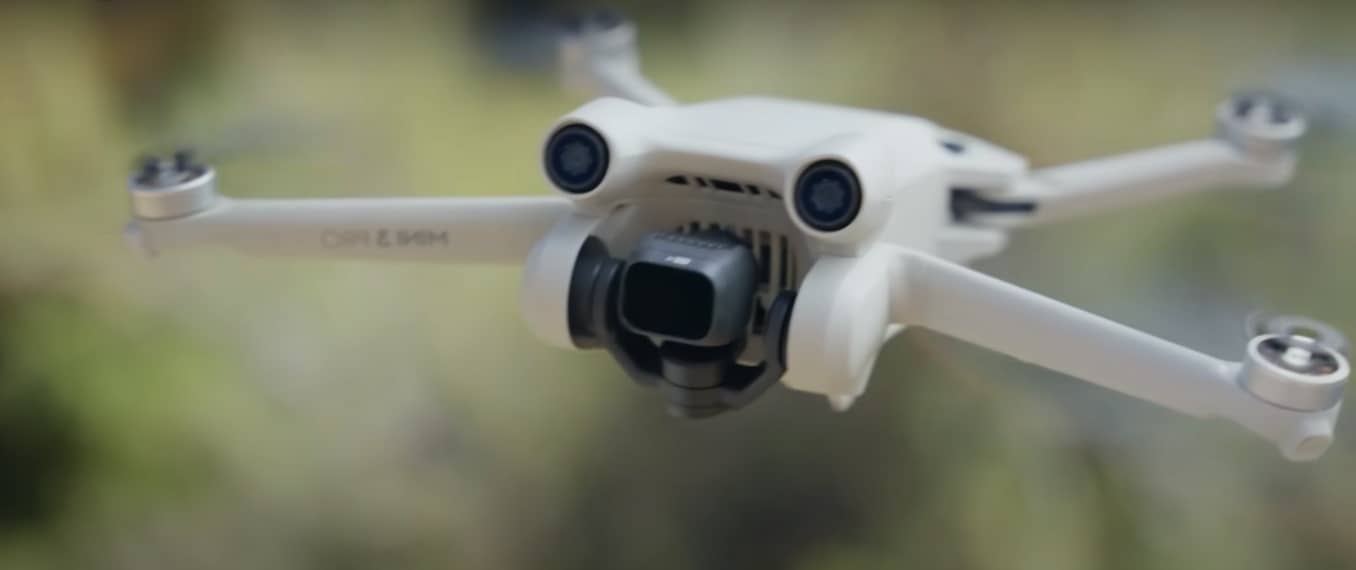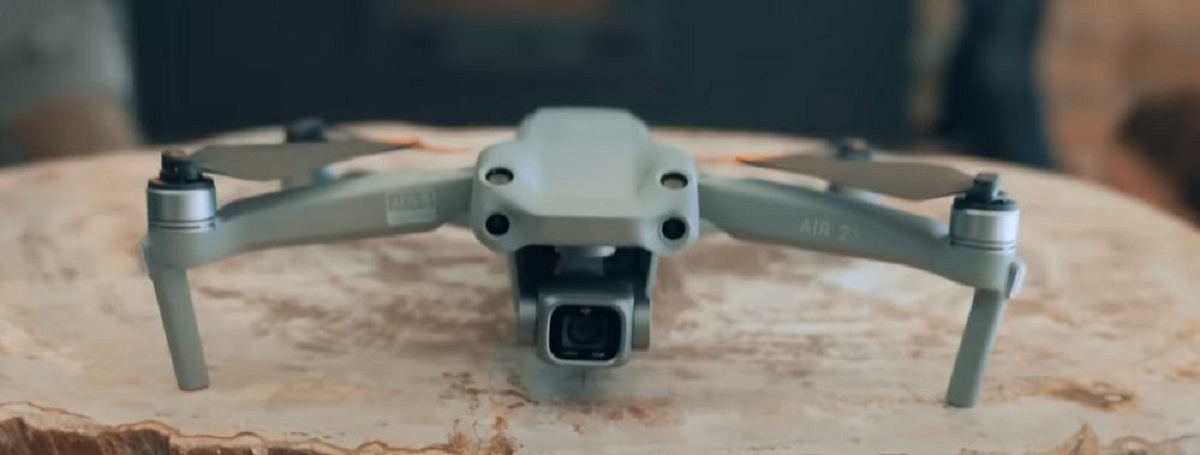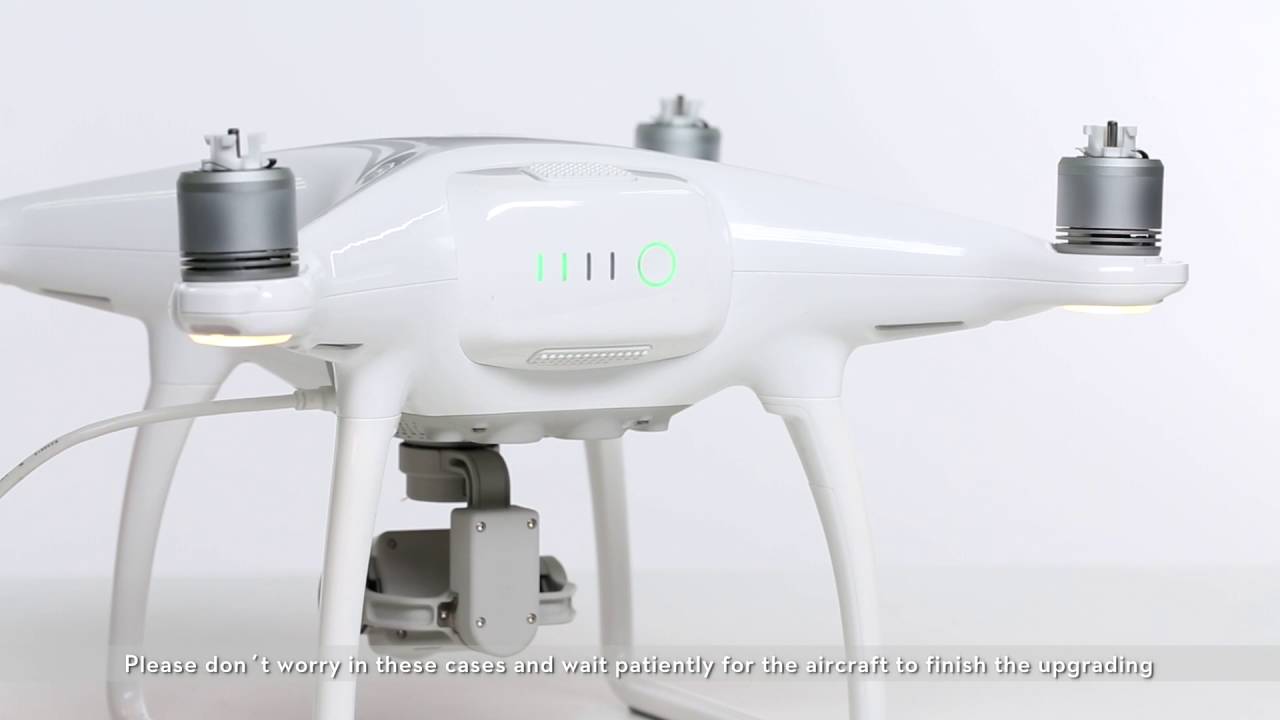Introduction
Welcome to the exciting world of flying a quadcopter drone! Whether you’re a beginner or an experienced pilot, this guide will provide you with valuable information and tips to help you take to the skies with confidence. Quadcopters, also known as quadrotor helicopters, are unmanned aerial vehicles that have gained immense popularity in recent years. They offer an exhilarating and immersive flying experience, allowing you to capture stunning aerial photographs and videos, explore new perspectives, and enjoy the thrill of piloting your own aircraft.
However, before you can begin your quadcopter adventure, it’s important to familiarize yourself with the necessary safety precautions and the essential components of a quadcopter. Understanding the controls and mastering the basic flight maneuvers are also key to becoming a proficient pilot. Additionally, this guide will cover advanced flight techniques, tips for flying in different conditions, troubleshooting common issues, and maintaining your quadcopter.
It’s worth noting that while quadcopter drones are incredibly fun to fly, they can also be powerful machines that require responsible handling. Ensuring the safety of yourself, others, and the environment should always be your top priority. By following the guidelines and recommendations outlined in this guide, you will be well-prepared to enjoy the exhilaration and freedom of quadcopter flying while keeping everyone safe.
So, without further ado, let’s delve into the fascinating world of quadcopter drones and uncover the secrets to mastering the art of flight.
Safety Precautions
Before taking your quadcopter drone for a spin, it’s crucial to prioritize safety to prevent accidents and ensure a smooth flying experience. By following these safety precautions, you can enjoy flying your quadcopter while minimizing risks:
- Know and Follow Local Regulations: Familiarize yourself with the laws and regulations regarding drone flying in your area. Understand any restrictions on flying altitude, distance from people or buildings, and any necessary permits or licenses.
- Choose a Suitable Flying Location: Look for spacious outdoor areas away from airports, crowded places, and power lines. Ensure the location provides a clear line of sight and minimal obstacles that could interfere with your flight.
- Check Weather Conditions: Avoid flying in strong winds, rain, or foggy conditions that may affect your control over the quadcopter. Weather conditions can impact stability and visibility, increasing the risk of accidents.
- Inspect Your Quadcopter: Before each flight, examine your drone for any signs of damage or loose parts. Ensure that propellers, motors, and battery connections are secure. A well-maintained quadcopter is crucial for safe and reliable flight.
- Install Propeller Guards: Consider attaching propeller guards to your drone to protect both the quadcopter and people around you from accidental collisions. These guards can prevent injuries and minimize damage in case of a crash.
- Keep a Safe Distance: Maintain a safe distance from people, vehicles, and animals while flying your quadcopter. This helps prevent accidents and potential injuries. Remember that your drone’s propellers can cause harm if they come into contact with anything.
- Monitor Battery Life: Keep an eye on your quadcopter’s battery level during flight. Make sure you have enough power to safely return and land your drone. It’s also advisable to follow the manufacturer’s guidelines for battery storage and charging to prevent malfunctions or accidents.
- Practice Proper Landing and Takeoff: Master the skill of taking off and landing smoothly. Find a clear spot to land and take off, away from obstacles and obstructions, to minimize the risk of crashes or damage to the quadcopter.
Always prioritize safety and responsible flying while enjoying the thrilling experiences that quadcopter drones offer. By adhering to these safety precautions, you can protect yourself, others, and your quadcopter, ensuring an enjoyable and accident-free flight.
Components of a Quadcopter
Understanding the various components that make up a quadcopter is essential for both beginners and experienced pilots. Familiarizing yourself with these components will not only help you operate your drone effectively but also allow you to troubleshoot any issues that may arise. Here are the key components you need to know:
- Frame: The frame is the structural backbone of the quadcopter. It provides stability and holds all the other components together. Frames are typically made of lightweight materials like carbon fiber or plastic to reduce weight and increase maneuverability.
- Motor and Propellers: Quadcopters are equipped with four motors and propellers, one for each arm. The motors generate the necessary thrust to lift the drone off the ground and maintain stability during flight. Each motor is paired with a propeller, which helps create lift and enables maneuverability.
- Flight Controller: The flight controller is like the brain of the quadcopter. It houses a microprocessor and sensors that collect data from the environment and provide stability control. This component ensures the quadcopter maintains its desired position and responds to pilot input.
- Electronic Speed Controllers (ESCs): The ESCs are responsible for regulating the speed of the motors. They receive signals from the flight controller and adjust the motor speed accordingly, allowing the quadcopter to move and change its orientation in the air.
- Battery and Power Distribution: The battery powers the quadcopter, supplying electricity to the motors, flight controller, and other electronic components. The power distribution board manages the power flow from the battery to the different components, ensuring they receive the necessary voltage.
- Radio Transmitter and Receiver: The radio transmitter is the handheld controller that the pilot uses to send control signals to the quadcopter. The receiver on the drone receives these signals and relays them to the flight controller, allowing the pilot to maneuver the quadcopter.
- Camera and Gimbal (Optional): Some quadcopters come with built-in cameras or can be equipped with a compatible camera and gimbal. The camera captures aerial footage and images, providing an exciting perspective. The gimbal helps stabilize the camera, reducing vibrations and ensuring smooth footage.
- LED Lights: LED lights are often present on quadcopters to enhance visibility, especially during low-light conditions. They help the pilot keep track of the drone’s orientation and position in the sky.
Each component plays a vital role in the quadcopter’s overall performance. Understanding how these parts work together will give you a deeper insight into the mechanics of your quadcopter and enable you to enhance your flying experience.
Understanding the Controls
Mastering the controls of a quadcopter is crucial for smooth and precise flying. By familiarizing yourself with the various control inputs, you can maneuver your drone with ease and confidence. Here’s an overview of the main controls you need to understand:
- Throttle: The throttle control determines the quadcopter’s altitude. By adjusting the throttle, you can increase or decrease the power to the motors, influencing the vertical movement of the drone. Pushing the throttle up increases the altitude, while pulling it down decreases it.
- Pitch, Roll, and Yaw: These controls are responsible for the quadcopter’s movement in different directions. Pitch controls the forward and backward tilt, roll controls the left and right tilt, and yaw controls the rotation of the quadcopter. Mastering the combination of these controls allows you to navigate in any direction.
- Trim: The trim controls are small adjustments that allow you to fine-tune the quadcopter’s stability and levelness during flight. These adjustments compensate for any minor imbalances or drifts that might occur, ensuring a stable and controlled flight.
- Flight Modes: Many quadcopters offer different flight modes, such as Normal Mode, Sport Mode, and GPS Mode. Each mode adjusts the responsiveness and limitations of the quadcopter’s controls. Familiarize yourself with these modes and understand how they affect the drone’s behavior.
- Return to Home: Most quadcopters come with a Return to Home (RTH) function. This feature allows the drone to automatically return to its takeoff location with the push of a button. Understanding how to activate and use RTH is important for maintaining the safety and security of your quadcopter.
- Auto-Hover: The auto-hover feature allows the quadcopter to maintain a stable position in the air without manual control input. This is particularly useful for capturing steady aerial shots or when you need to take a break from controlling the drone.
When starting out, it’s recommended to practice flying in an open and obstacle-free area until you become comfortable with the controls. Take the time to familiarize yourself with each control input and their effects on the quadcopter’s movement. With practice, you’ll gain confidence and be able to execute precise maneuvers and flights.
Remember to always fly responsibly, respect local regulations, and be mindful of other people’s privacy and property while operating your quadcopter.
Takeoff and Landing
Mastering the techniques for takeoff and landing is essential for a successful and controlled flight with your quadcopter. Here are the key steps to follow:
- Pre-Flight Checks: Before taking off, ensure that your quadcopter is in optimal working condition. Check the battery level, propellers, and any other relevant components. Make sure the area is clear of obstacles and suitable for takeoff.
- Power On: Turn on your quadcopter by connecting the battery and the power switch. Ensure that the flight controller and receiver are properly connected and receiving signals from the transmitter.
- Calibrate the Compass: Some quadcopters require compass calibration before takeoff. Follow the manufacturer’s instructions to perform this task, usually involving rotating the drone in a specific pattern.
- Arm the Motors: Many quadcopters have motor arming protocols to prevent accidental throttle activation. Follow the instructions provided by the manufacturer to arm the motors, usually by simultaneously manipulating the controls on the radio transmitter.
- Takeoff: Gradually increase the throttle to initiate takeoff. As the quadcopter lifts off the ground, maintain a steady hand on the throttle control to ensure a smooth ascent. Keep an eye on the altitude and make any necessary adjustments to achieve the desired height.
- Stabilize and Hover: Once the quadcopter is in the air, stabilize it by adjusting the pitch, roll, and yaw controls. Aim to maintain a stable hover, making small corrections as needed to keep the quadcopter in position.
- Landing: When it’s time to land, decrease the throttle gradually to lower the quadcopter gently. Aim for a controlled descent, maintaining stability and avoiding any sudden movements. As the drone gets closer to the ground, reduce the throttle further to achieve a smooth landing.
- Power Off: After landing, switch off the motors and disconnect the battery. Perform any post-flight checks, such as inspecting the quadcopter for any damage or loose parts.
It’s important to remember that during takeoff and landing, you should always keep a safe distance from people and objects. Practice these maneuvers in an open area away from obstacles until you feel confident in your abilities. If you’re a beginner, consider using propeller guards to minimize the risk of damage in case of a collision.
By mastering the art of takeoff and landing, you’ll be able to confidently start and end your flights smoothly, allowing you to fully enjoy the excitement and freedom of flying a quadcopter.
Basic Flight Maneuvers
Once you have mastered the takeoff and landing procedures, you can begin to explore the various basic flight maneuvers with your quadcopter. These maneuvers will allow you to navigate the drone in different directions and perform controlled movements. Here are some essential flight maneuvers to practice:
- Hovering: Start by mastering the art of hovering. Use the throttle, pitch, roll, and yaw controls to maintain a stable position in the air without drifting or tilting. Focus on keeping the quadcopter steady and making any necessary adjustments to counteract any wind or environmental factors.
- Forward and Backward Flight: Practice moving your quadcopter forward and backward in a straight line. Gradually increase the throttle while pushing the pitch control forward to move the drone forward. To fly backward, reduce the throttle and pull the pitch control backward.
- Left and Right Flight: Next, practice flying your quadcopter left and right. Use the roll control to tilt the drone in the desired direction. Push the control to the left for leftward flight and to the right for rightward flight. Maintain a steady altitude while performing these maneuvers.
- Turning: Turning is an important maneuver to master. Use the yaw control to rotate the drone. Push the control to the left for a counterclockwise turn and to the right for a clockwise turn. Combine yaw with pitch and roll to execute smooth and precise turns.
- Ascending and Descending: Practice ascending and descending while maintaining control and stability. Increase the throttle to ascend, gradually gaining altitude. To descend, reduce the throttle steadily while keeping an eye on the drone’s altitude.
- Combining Maneuvers: Once you’re comfortable with individual maneuvers, try combining them. For example, fly a diagonal path by simultaneously using the pitch, roll, and yaw controls. Experiment with different combinations to achieve more complex flight patterns.
Remember to start with slow and small movements, gradually increasing your confidence and proficiency. Regular practice and patience are key to mastering basic flight maneuvers. As you become more comfortable, you can increase the speed and agility of your quadcopter, allowing you to perform more advanced maneuvers in the future.
Always prioritize safety and respect the limitations of your quadcopter. Avoid flying in crowded areas and follow local regulations to ensure a safe and enjoyable flight experience.
Advanced Flight Techniques
Once you have a good grasp of the basic flight maneuvers, you can start exploring more advanced flight techniques with your quadcopter. These techniques will allow you to add creativity and excitement to your flights. Here are some advanced flight techniques to practice:
- Banked Turns: Instead of performing flat turns, practice executing banked turns. Tilt the quadcopter while turning to create a more dynamic and visually appealing maneuver.
- Aerial Flips and Rolls: Once you’re confident in your flying skills, attempt aerial flips and rolls. These maneuvers involve performing a complete flip or a 360-degree roll in the air. Remember to start with smaller flips and rolls and gradually work your way up to more advanced aerial acrobatics.
- Circle Flying: Fly your quadcopter in a circular path around a specific point of interest. This technique is great for capturing shots that showcase a specific area or object from multiple angles.
- Spot Landings: Test your precision by attempting spot landings. Choose a designated landing area and practice landing your quadcopter accurately within that space. This technique requires careful control and coordination.
- Follow Me: If your quadcopter is equipped with a follow-me mode or tracking feature, practice using it to track and follow a moving subject. This technique is ideal for capturing dynamic footage while engaging in activities such as hiking, biking, or running.
- Obstacle Avoidance: Set up an obstacle course and practice navigating your quadcopter through it. This will improve your control and ability to maneuver in tight spaces, increasing your overall flying skills.
- FPV Flying: If your quadcopter supports first-person view (FPV) flying, experiment with flying using a live feed from the onboard camera. This immersive experience provides a thrilling and unique perspective, allowing you to fly from the drone’s point of view.
Remember to push your skills gradually and maintain a safe flying environment while attempting these advanced techniques. Always fly within your capabilities and ensure proper visibility and line-of-sight control. Practicing these maneuvers will enhance your piloting abilities and enable you to capture stunning aerial footage and photographs.
Continue to expand your knowledge, master new maneuvers, and experiment with different flight techniques to elevate your quadcopter flying skills to new heights.
Tips for Flying in Different Conditions
As a quadcopter pilot, it’s important to be prepared for flying in different weather and environmental conditions. By following these tips, you can optimize your flights and ensure a safe and enjoyable experience:
- Wind: Be mindful of wind conditions before flying. Strong gusts can affect the stability of your quadcopter and make it challenging to control. Check the weather forecast and avoid flying on excessively windy days.
- Rain and Moisture: Flying your quadcopter in rain or wet conditions can damage the electrical components and compromise the safety of your flight. Always check the weather forecast and avoid flying in inclement weather.
- Extreme Temperatures: Extreme temperatures can impact the performance of your quadcopter and affect the battery life. Avoid flying in extremely hot or cold conditions, as it can lead to overheating or reduced battery efficiency.
- Sunlight and Glare: Flying your quadcopter in direct sunlight or glare can make it difficult to see the drone’s orientation and the live feed from the camera. Fly in areas with adequate shade or use polarized sunglasses to reduce glare and improve visibility.
- Indoor Flying: If you’re flying indoors, ensure that the area is large enough and free from fragile objects and obstacles. Pay attention to the ceiling height and any potential interference signals that may affect the quadcopter’s GPS or transmission.
- GPS Signal: If your quadcopter relies on GPS for stability and positioning, ensure a strong GPS signal before taking off. Fly in open areas away from tall buildings and structures that may interfere with the signal.
- Flight Range: Understand the range limitations of your quadcopter’s transmitter. Avoid flying your drone beyond the recommended range to prevent loss of control and potential crashes.
- Visibility: Maintain visual contact with your quadcopter at all times. Fly within your line of sight to ensure you can see and avoid any obstacles or potential hazards in the area.
- Checklist: Develop a pre-flight checklist to ensure you don’t miss any important steps before takeoff. This can include checking the battery level, propellers, motors, and ensuring the flight controller and receiver are properly connected.
- Respect Privacy and Regulations: Always adhere to local laws and regulations regarding drone flying. Respect people’s privacy and property rights, and obtain any necessary permits or approvals before flying in restricted areas.
By following these tips, you can maximize your safety and enjoyment while flying your quadcopter in different conditions. Remember to prioritize responsible flying and adhere to local regulations to foster positive relationships with the drone community and the public.
Stay informed, stay safe, and have fun exploring the possibilities of quadcopter flight!
Troubleshooting and Maintenance
Even with careful preparation, occasional issues may arise with your quadcopter. Understanding how to troubleshoot common problems and perform regular maintenance can help keep your drone in optimal condition. Here are some troubleshooting tips and maintenance practices:
- Unresponsive Controls: If the controls on your quadcopter are not responding as expected, check the battery levels of both the quadcopter and the transmitter. Low battery power can result in unresponsive controls. Replace or recharge the batteries as necessary.
- Propeller Issues: If your quadcopter is experiencing stability issues or unusual vibrations, inspect the propellers for any damage or misalignment. Replace any damaged or worn-out propellers with the appropriate replacements.
- GPS Problems: If your quadcopter relies on GPS for stability and position hold, make sure you have a strong GPS signal before taking off. Avoid flying in areas with signal interference, such as near tall buildings or dense trees.
- Battery Performance: Monitor the performance of your quadcopter’s battery. If you notice a significant decrease in flight time or overall battery life, it may be time to replace the battery. Follow the manufacturer’s guidelines for proper battery maintenance and charging.
- Camera and Gimbal Calibration: If your quadcopter is equipped with a camera and gimbal, occasional calibration may be necessary. Follow the manufacturer’s instructions to calibrate the camera and gimbal to ensure smooth and stabilized footage.
- Software and Firmware Updates: Stay updated with the latest software and firmware releases for your quadcopter. Manufacturers often release updates to improve performance, enhance features, and address any known issues. Check the manufacturer’s website or app to download and install updates as recommended.
- Cleaning and Inspection: Regularly clean your quadcopter to remove dirt, dust, and debris that can accumulate during flights. Use a soft cloth or brush and avoid using water or cleaning agents that may damage the electronic components. Additionally, inspect the quadcopter for any loose connections or signs of wear.
- Storage and Transportation: Store and transport your quadcopter in a protective case or bag specifically designed for drones. This helps protect it from damage during transportation and prevents exposure to extreme temperatures or moisture when not in use.
- Professional Help: If you encounter persistent issues that you’re unable to troubleshoot or if your quadcopter sustains significant damage, it may be best to seek professional help. Contact the manufacturer’s customer support or a certified repair service for guidance and assistance.
Regular maintenance and troubleshooting are crucial for the longevity and proper functioning of your quadcopter. By following these practices, you can address common issues and ensure that your drone is always ready for a safe and enjoyable flight.
Remember to consult the manufacturer’s manual or website for specific troubleshooting steps and maintenance guidelines tailored to your quadcopter model.
Conclusion
Congratulations on completing this comprehensive guide to flying a quadcopter drone! By now, you should have a solid understanding of the safety precautions, components, controls, takeoff and landing techniques, basic flight maneuvers, advanced techniques, flying in different conditions, troubleshooting, and maintenance practices associated with quadcopter piloting.
Remember, flying a quadcopter is not just about the technical aspects – it’s also about the joy and freedom of exploring the skies and capturing incredible aerial footage. As you continue your journey as a quadcopter pilot, always prioritize safety, respect local regulations, and fly responsibly, keeping the well-being of others and the environment in mind.
Maintaining your quadcopter and troubleshooting any issues that arise will ensure its optimal performance and longevity. Regularly inspect and clean your drone, update software and firmware as recommended, and seek professional help when necessary.
Lastly, keep honing your skills as a pilot by practicing different flight maneuvers, mastering advanced techniques, and pushing your limits. Each flight will be a new opportunity to learn and improve, allowing you to capture stunning aerial photographs and videos that will amaze and inspire.
Remember to have fun and enjoy the process of flying a quadcopter drone. Embrace the freedom of flight and explore new perspectives that were once only possible in your dreams. So, let your imagination soar, and may every flight be an extraordinary adventure!







